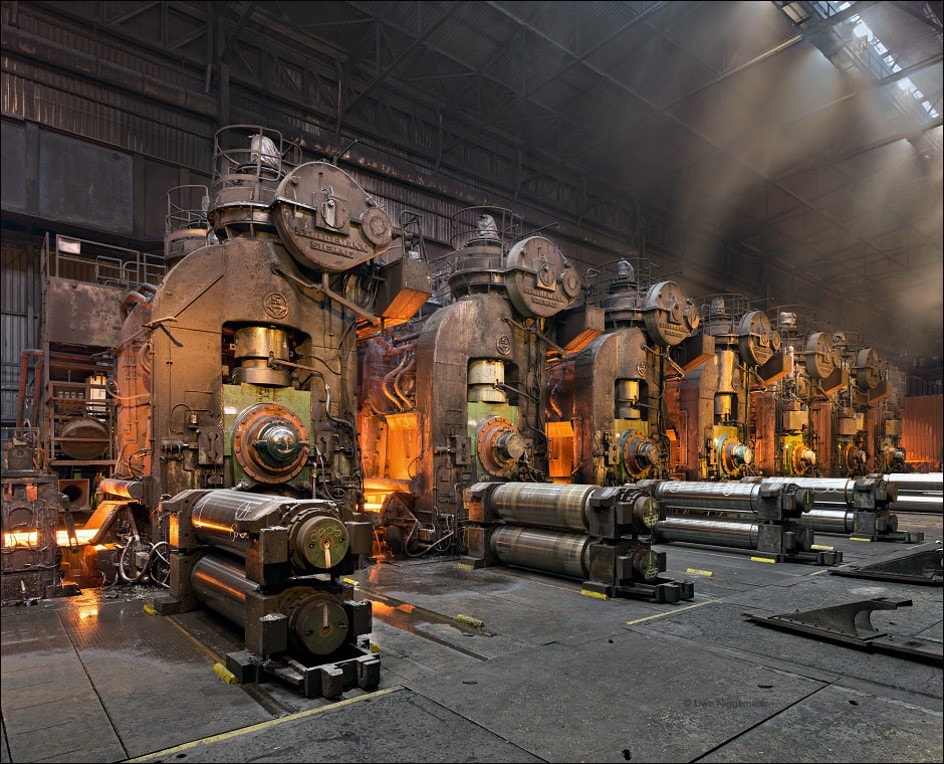Introduction
Metal has been utilized in artwork and design for hundreds of years, with its versatility and durability making it a wellknown determination amongst artists and designers. One strategy that has played a terrific function within the heritage of metalwork is rolling, which consists of passing metal because of rollers to create thin sheets or strips. In this text, we'll explore the eye-catching background of rolled metal in paintings and layout, tracing its origins, evolution, and effect on more than a few inventive hobbies.
The Origins of Rolled Metal
Ancient Beginnings: Early Examples of Rolled Metal
The use of rolled metallic shall be traced again to historical civilizations, in which artisans observed the blessings of manipulating steel thru rolling processes. In old Egypt, for example, rolled gold was once used to create intricate earrings pieces that showcased the skill and craftsmanship of the artisans. Similarly, in historic Greece, rolled copper turned into utilized to produce decorative items and sculptures.
Medieval Advancements: The Role of Rolled Metal in Armor Production
During the medieval interval, rolled steel performed a significant role in armor production. Knights depended on fits of armor made from rolled metal or iron to shield themselves for the period of fight. The rolling procedure allowed for the creation of solid but versatile armor plates that can face up to the have an impact on of weapons although presenting freedom of circulation.
The Evolution of Rolled Metal Techniques
Industrial Revolution: Advancements in Rolling Mills
https://tonmetholding.com.ua/uk/produkciya-2/c/spetsstal/The Industrial Revolution marked a major milestone inside the background of rolled metal. With the discovery of steam-powered rolling turbines within the 18th century, the construction activity turned into greater productive and settlement-fantastic. This ended in an expanded availability of rolled steel sheets and strips, allowing artists and architects to experiment with new forms and functions.
Art Nouveau Movement: Incorporating Rolled Metal into Organic Designs
In the late nineteenth century, the Art Nouveau circulate emerged as a response to industrialization. Artists sought inspiration from nature, incorporating organic and natural shapes and paperwork into their designs. Rolled metal have become a appreciated material for the period of this era, as its malleability allowed artists to create flowing lines and difficult patterns similar to vegetation and flowers.
Art Deco Era: Embracing Geometric Forms with Rolled Metal
The Art Deco circulation of the Nineteen Twenties and Thirties embraced geometric types and sleek designs. Rolled metallic performed a huge role in this period, because it allowed for the introduction of sharp edges, sparkling traces, and polished surfaces. The use of rolled steel in fixtures, earrings, and structure grew to become synonymous with the Art Deco aesthetic.
The Impact of Rolled Metal on Modern Design
Contemporary Applications: From Industrial Design to Sculpture
In glossy times, rolled steel continues to be an fundamental part of art and layout. Its versatility has led to its software in several fields, consisting of industrial layout, sculpture, and structure. The use of rolled metallic in state-of-the-art furnishings design, to illustrate, permits for the construction of light-weight yet sturdy portions which will stand up to favourite use.
Sustainable Design: Recycling Rolled Metal
With increasing issues about sustainability and environmental have an effect on, the recycling of rolled metallic has received prominence in latest years. By repurposing current material, designers can create exclusive pieces whilst slicing waste. Rolled metal's talent to be recycled repeatedly with no dropping its residences makes it a fantastic alternative for sustainable design practices.
FAQs
What is rolled steel? Rolled metallic refers back to the process of passing steel via rollers to create thin sheets or strips. This methodology enables for the manipulation of steel into favored shapes and types.
When turned into rolled steel first used in paintings? Rolled metal has been used in paintings for hundreds of years, with old civilizations which includes Egypt and Greece utilising this manner to create rings and ornamental items.
How did rolled steel have an impact on armor construction? During the medieval era, rolled metal played a central role in armor manufacturing. It allowed for the advent of bendy but sturdy armor plates that provided insurance plan to knights for the duration of warfare.
Which artistic pursuits embraced rolled metal? Art Nouveau and Art Deco are two creative routine that embraced rolled metal. Art Nouveau artists incorporated healthy shapes and types, even though Art Deco artists concentrated on geometric designs.
What are a few brand new packages of rolled metallic? Rolled metal is greatly utilized in latest layout, which includes industrial layout, sculpture, and architecture. It allows for the creation of lightweight yet sturdy portions.

How does rolled steel make a contribution to sustainable layout? Rolled metal will also be recycled continuously devoid of wasting its houses, making it an amazing decision for sustainable layout practices. By repurposing current components, designers can diminish waste and create enjoyable pieces.
Conclusion
The background of rolled metal in paintings and design is a testament to its enduring attraction and flexibility. From historical civilizations to fashionable-day designers, the approach of rolling metal has allowed artists and artisans to create problematic jewellery, armor, fixtures, and sculptures. As we maintain to discover new components and recommendations, rolled metallic continues to be an integral component of the artistic landscape, bridging the gap among culture and innovation.